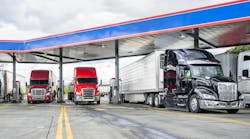By 2015, about two-thirds of the world will be living in urban areas, according to research by the University of Michigan (U-M) – exacerbating traffic congestion and presenting major challenges to basic transportation and personal mobility.
To solve some of those problems, the university and Ford Motor Co. are joining forces to test “Ford Urban Mobility Networks,” a pilot program that will explore how to coordinate a variety of transportation options and provide vital real-time information to individuals living in densely populated urban centers.
Sue Cischke, Ford group vp for sustainability, environment and safety engineering, said this program results from the company’s ongoing collaborations with the university’s Sustainable Mobility and Accessibility Research and Transformation (SMART) initiative.
“Because we view Ford’s core business to be mobility, we will be active in helping major cities address their future transportation challenges,” Cischke said at a mobility summit hosted by U-M last week. “We see an opportunity for us to create value for our stakeholders by applying our expertise in vehicle engineering and fleet management, logistics and business planning to their mobility challenges.”
The focus of Ford’s mobility program is to efficiently connect individuals to a variety of transportation options – buses, trains, taxis, car-share fleets, mopeds and bicycles – in urban areas where population growth is beginning to affect access to affordable personal mobility. These transportation options are available through a transfer point or “hub” where various modes of transportation and services come together, noted Bill Ford, the company’s executive chairman.
“Even as we reckon with the near-term realities of record oil prices and tough economic conditions, as a company we must also have the courage to address today the long-term business challenges that we know await us,” said Ford. “This means understanding how personal mobility will evolve in a future where rapid population growth is going to create more congestion and emissions than we as a society can sustain.”
The first cities chosen to pilot Ford Urban Mobility Networks are Cape Town, South Africa, along with Chennai and Bangalore, India. The program hopes to offset emerging infrastructure stresses by providing alternatives to personal vehicle ownership, reducing vehicle miles traveled and carbon dioxide emissions as well as increasing usage of public transportation and non-motorized options.
By 2015, about two-thirds of the world will be living in city regions, according to U-M’s research, with at least 35 cities around the world projected to have a population of more than 10 million. In these so-called “mega cities,” as well as in smaller cities that are proliferating worldwide, traffic congestion is expected to grow and access to personal mobility will become constrained, fueled further by rising birth rates and rural-to-urban migration patterns that are already are leading to infrastructure stresses, congestion and pollution, said the university.
Already, many cities are using curbs, such as vehicle usage gas taxes and limits on traffic in city centers, to reduce congestion and carbon dioxide emissions that come with rapid population growth, said Ford. This means that some day commuters may be forced to leave their personal transportation at home or pay a penalty to travel by car into an overpopulated urban area.
“That’s why we think automakers have a great opportunity here to participate and lead,” said Susan Zielinski, managing director of SMART at U-M. “It is through this kind of collaboration across business sectors involved in the new mobility industry, along with government, academia and community stakeholders that we can develop and apply innovative solutions that will not only alleviate some of the congestion and pollution in our increasingly urbanized world, but will also provide major new markets in the emerging new mobility economy.”
View more Fleet Owner management news and other commercial trucking-related articles.




